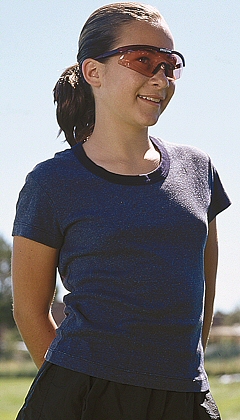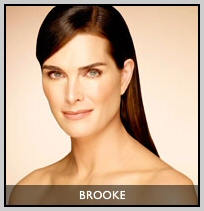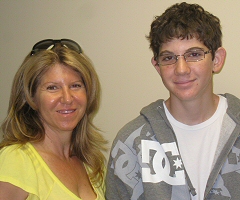Newsletter Issue 1 | Aug 2009
Florida Eye News and Views

It’s good to see you…
We hope you enjoy the premiere issue of our newsletter, Florida Eye News and Views. The newsletter, which will be available on our site and emailed quarterly to our patients who sign up to receive it, will be your link to keeping informed about the latest eye care developments, medical procedures and treatments, medications, new technologies, clinical trials, and cosmetic procedures and products, such as Latisse, the first and only FDA-approved prescription treatment that grows sparse eyelashes longer, thicker and fuller.
At Florida Eye Microsurgical Institute, our patient’s needs are our top priority. It is our heartfelt mission to provide patients with the most effective treatments available today, blending the latest technological advances and state-of-the-art medical equipment with care, concern and integrity.
Our highly-qualified, board certified physicians, RNs, medical technicians and staff offer a full range of comprehensive ophthalmologic care, including routine eye care and examinations, pediatric eye care, dry eye treatments, advanced corneal, retinal and cataract procedures, laser treatments, glaucoma and diabetic procedures, and various other sophisticated treatments.
In this Issue:
Advances in Treatment of Age-Related Macular Degeneration »
FL Eye Receives Accreditation to Host CE Courses for Physicians »
Tips for Effective Florida Eye Care All Year Round »
Always Wishing for Longer, Fuller Eye Lashes? Latisse is Here! »
The Importance of Back to School Eye Exams »
Advances in Treatment of Age-Related Macular Degeneration

“What’s so exciting about the findings of this trial,” explains Dr. Randy Katz, Florida Eye Microsurgical Institute’s retinal and macular degeneration specialist, “is that there are currently no FDA-approved treatments for GA. Over time macular degeneration robs its victims of their sight and can render them legally blind. OT-551, is the first eye drop to ever be tested in a clinical trial as a treatment for dry AMD, and its results thus far are extremely encouraging.”
OT-551 is a topically-dosed, patented small molecule that acts on oxidative stress and disease-induced inflammation,” says Dr. Katz, “and when administered to patients, it has shown to be successful for reducing moderate vision loss (i.e., 15 letters or more on the ETDRS chart) in patients with GA who were treated with OT-551 compared with a placebo.”
The twelve month findings from the two-year trial give great hope to millions of Americans who suffer with GA. “Patients with this condition lose their ability to read, drive and see the faces of their friends and families,” says Dr. Katz. “The real possibility that OT-551 will help treat GA is tremendous.”
An independent Data and Safety Monitoring Committee is scheduled to review the interim results of the Phase II study later this month, and once the final results are reported, Phase III of the trial will begin.
Also very promising – another clinical drug trial for GA involving Florida Eye patients. Produced by Sirion Therapeutics, Inc., the drug, fenretinide, reported positive results from its Phase II trial. The analysis of the orally administered drug for the treatment of GA associated with age-related macular degeneration compared the growth rate of GA lesions, as measured by retinal photography, in patients treated with daily doses of placebo of 100 mg or 300mg of fenretinide.
The results? “Amazing,” says Dr. Katz. The drug, an oral vitamin A binding protein antagonist, is believed to halt the accumulation of retinol (vitamin A) toxins through affinity for retinal-binding protein. It is also believed to slow the formation and accumulation of toxic byproducts thought to be responsible for vision loss in conditions like GA. According to Dr. Katz and the study findings, the data showed slower growth of the GA lesions for the 300mg dose for all lesions of size at entry. This trend was evidenced as early as six months into the trial and increased over time. Among the subpopulation of 78 patients who reached the 18 month study visit, the median growth rate of the lesions in the 300mg group was 22.7% versus 41.6% in the placebo group, representing a 45% reduction in median lesion growth rate at month 18 of the trial. The current study is powered to detect a 50% reduction in lesion growth rate at 24 months.
Also encouraging, slower lesion growth was observed in the 100mg group among test subjects who had lesions smaller than the median baseline at entry. According to Dr. Katz, “these findings suggest that early intervention may improve outcomes in halting the progression of the disease.”
Because of the promising results of the Phase II study, Sirion is continuing the current study to its conclusion, and plans are already underway for Sirion to meet with its scientific advisors and the FDA to design an appropriate Phase III program for the new drug.
More positive news from Sirion – the FDA has granted Fast Track designation for fenretinide for the treatment of GA associated with AMD. What does this mean for those involved in the trials?
According to Dr, Katz, Sirion’s ability to use Fast Track designation in its work has “the potential to accelerate the development of fenretinide for the treatment of geographic atrophy, which, as we know, is a condition with no currently approved treatment. Now that Sirion has received the green light to incorporate Fast Track into their treatment studies, we are extremely optimistic that Sirion will bring a much needed treatment option to patients living with GA.”
In May, Dr. Katz will present a poster at the May 6th, 2009 annual meeting of the Association for Research in Vision and Ophthalmology in Ft. Lauderdale, where he will present a summary of the fenretinide trial’s top-line results.
The Phase III trial is slated to begin in 2010, and Dr. Katz is currently seeking patients who may qualify to be a part of the trial. “There is no other treatment at this time for the condition,” says Dr. Katz, “so with the initial promising results patients have nothing to lose and plenty to gain. The drug company covers all of the associated costs of the trial, including medication and sometimes even transportation costs.” Anyone interested in becoming a trial participant is urged to contact Dr. Katz at Florida Eye at (561) 737-5500.
FL Eye Receives Accreditation to Host CE Courses for Physicians
Florida Eye is pleased to be able to offer continuing education seminars to Florida optometrists throughout the year, so that they can stay informed and up-to-date on the most current medical treatments, techniques, equipment and procedures available to their practices and their patients.
Lectures and seminars are conducted several times a year by Florida Eye’s own practicing ophthalmologists as well as highly respected guest lecturers. Doctors who choose to attend our educational seminars receive a certificate of completion and two hours of continuing education credits.
We are certified by the State of Florida’s Department of Business and Professional Regulation and approved by the Florida Board of Optometry.
Crystalens Success Story
Crystalens makes it possible for 21-year-old Ryane Mckenna to see clearly for the first time in years!!

When you hear about what she loves — her dogs, making scrambled eggs, and of course, boys, you might not think twice about twenty-one-year-old Ryane McKenna. Lots of girls love their pets, cooking and boys. But what will make you stop and take notice is that this particular twenty-one-year-old was, up until a few months ago, losing most of her vision, and that these days, because of a lens implant, she is clearly and vividly seeing everything, each and every day.
What also might make you notice Ryane is that she was born with Down’s Syndrome, but if you ask her, she’ll tell you she’s not different – she’s special. And when you meet her, you can see that she certainly is special, and you can also understand why, after researching their various options, she and her parents decided to let Ryane undergo a surgical eye procedure that restored her sight to 20/30. No more glasses for Ryane — period.
The surgery that changed Ryan’s life was performed by cornea and external disease specialist Dr. Barry Schechter of the Florida Eye Microsurgical Institute. In two separate surgeries, each taking less than ten minutes, Dr. Schechter was able to remove cataracts from Ryane’s eyes, and then replace her natural lens with “Crystalens,” a synthetic lens designed to work in concert with the eye’s natural muscles. “When a patient’s eyes are implanted with Crystalens, says Dr. Schechter, “the new lens “flexes” to accommodate and allow focusing for near, intermediate and distance subjects. Crystalens totally mirrors the function of the natural lens.”
Ryane and her parents met Dr. Schechter in October of 2008 through his partner, pediatric and adult strabismus specialist Dr. Lee Friedman. Ryane had been a patient of Dr. Friedman’s from a very early age, and while Dr. Friedman did whatever he could for her, Ryane was relegated to wearing coke bottle glasses with extremely thick lenses. Year after year Ryane wore her glasses, each and every minute of the day, except when she was sleeping. Only at bedtime, says Ryane, would she take her glasses off and place them on the night table right by her bed, so she would be able to feel for them each morning. “I had to wear my glasses to put toothpaste on my toothbrush,” says Ryane, and, “I couldn’t see my dogs, Black Jack and Sammie, my friends, or even colors very well.”
After all these years, Ryane was used to living with her glasses and her poor eyesight, but, as she got older, her vision continued to deteriorate. At her visit with Dr. Friedman back in October, the surgeon asked her if she was bumping into walls, because he could tell upon examination her cataracts were slowly robbing Ryane of even more of her already compromised vision. When she answered yes, he told Ryane and her parents that he thought they should make an appointment to see Dr. Schechter. And that’s just what the family did.
The decision to implant the Crystalens was made after the McKenna’s weighed the options Dr. Schechter laid out for them, and, after they received the thumbs up from Ryane’s uncle, Dominick Marino, an optometrist in Palm Beach County. “There were other ways to go that were covered by insurance,” says Ryan’s dad, “but my brother-in-law researched the lens, the procedure and Dr. Schechter, and he told us in his opinion implanting Crystalens would not only greatly improve Ryane’s quality of life, but that she might not even need glasses after the procedure.”
That statement turned out to be absolutely true. Since the surgery, which was completed in two sessions — one for each eye — Ryane says she can see everything perfectly. She can cook her favorite dish, scrambled eggs and toast, by herself, help walk Black Jack and Sammie, and, simply stare and smile at the boys, whether they are her classmates at Jupiter High School or the cute guys she sees while working at Publix. What she is most looking forward to is when her brother Ben comes home from Germany in August. “He’s on a study abroad program from UNF,” says Ryane, “and I miss him so much and I can’t wait to see him when he gets back.”
Dr. Schechter says that Ryane’s vision was 20/800 in one eye before the surgery, and 20/400 in the other. Since the surgeries, Ryane’s vision in both eyes is now 20/30, and it’s true — she doesn’t need glasses. “Actually, Ryane won’t ever need glasses again,” says Dr. Schechter. “Crystalens is a permanent replacement solution.”
Dr. Schechter says the Crystalens procedure normally takes about ten minutes, and can be performed in the Institute’s outpatient ambulatory surgical center in Boynton Beach, with minimal anesthesia. “Since Ryane wanted to be asleep, we performed the surgeries at the outpatient Boca Raton surgical center under general anesthesia. ” After the first surgery was performed last December, it didn’t take Ryane long to notice a difference in her ability to see. “I was on my way home with my dad, and I could already make out the lettering on the trucks we passed on the road,” says Ryane.
A few months later, when it came time for the second surgery, Ryane wasn’t nervous anymore and she was raring to go. And once again, almost immediately, she could see clearly, and brilliantly — not only people and objects were clearer, but colors also became brighter and more vibrant. “My favorite color is green,” says Ryane, as she points to her green sunglasses, green shirt, green sneakers and yes — even her green cell phone.
For Ryane, having Dr. Schechter implant Crystalens was the way to go. But how would someone else know if he or she was even a candidate for the lens replacement? Dr. Schechter says that overall, ideal candidates have never had cataract surgery before, they have no major health problems, and they have healthy eyes. “We generally see patients in their fifties and sixties — people whose vision has worsened and they don’t want to wear reading glasses anymore. Ryane was by no means our average patient, but she was still the perfect candidate.” Dr. Schechter adds that only an ophthalmologic surgeon can determine if the surgery is right for a particular patient, but if someone is considered a good candidate, then the rewards are incredible.
According to the manufacturers of Crystalens, most Crystalens patients see well and can read a newspaper or phonebook without glasses. Patients are also able to see their computers, dashboards and anything else at arm’s length without glasses. Another plus — most patients are able to see 20/40 or better after surgery, so the clock across the room or the TV in the corner are clearly within sight.
“It’s all about improving the quality of life for our patients,” says Dr. Schechter. “Ryane and her parents are thrilled with her results, and the fact that she doesn’t need to reach for her glasses anymore before she gets out of bed every morning is the icing on the cake.”

Ryane with Black Jack and Sammie
Eye Care Questions
Dear Dr. Katz:
My grandfather had diabetes and later lost his vision to diabetic retinopathy. I’m 44, 25 pounds overweight and my vision has become blurry. Should I be concerned?
Answer

It’s true that having a family history of diabetes definitely makes you more prone to the condition, and yes, being overweight can increase your risk. When you’re at high risk for diabetes, a condition we often call “pre-diabetes,” research shows that eating well (making good food choices) and exercising four or five times a day for a half hour each day for general health and to lose weight can significantly reduce your risk of becoming diabetic. I would suggest you see your primary care physician to see if you have diabetes, and an eye doctor to check out your blurry vision, which may or may not have anything to do with diabetes.
Dear Dr. Gorscak:
I’ve been experiencing extreme redness, dull to sharp constant pain, no discharge and a scratchy feeling in both eyes, but not necessarily both at the same time. I know it’s not dry eye. Any idea what’s going on?
Answer

The most common causes of red eye are dry eye and ocular allergy, however, with the additional symptoms you have described, it’s possible you may have an infection, pink eye (viral conjunctivitis), or inflammation of the conjunctiva or eye surface (episcleritis or scleritis). The treatments for these conditions are all different, which is why it is so important to get your condition properly diagnosed by a board certified eye doctor. It’s definitely not normal to have pain of any kind, so I would suggest you make an appointment promptly.
Tips for Effective Florida Eye Care All Year Round
Don’t Forget to Protect Your Eyes from the Florida Sun!

“Protecting your eyes from the sun is as important as protecting your skin,” according to Florida Eye’s Dr. Jonathan Chua. “By wearing UV blocking sunglasses, you can enjoy the summer and the Florida lifestyle in general, safely, while lowering your risk for potentially blinding eye diseases and tumors.”
The longer the exposure to bright light, the greater the risk is. Excessive exposure to UV light reflected off sand, water or pavement can damage the eyes’ front surface. In addition to cataracts and AMD, sun exposure can lead to lesions and tumors that may be cosmetically unappealing and frequently require surgical removal.
Damage to the eyes from UV light is not confined to the outdoors; it is also a concern with indoor tanning beds. “Ultraviolet radiation levels to the eye are much greater in a tanning booths than outside in the sun,” according to Dr. Chua. “Corneal burns, cataracts, and, in rare instances, retinal damage can occur.” It’s important to wear specially made goggles designed for use in tanning booths for protection of the eyes from UV light.
In choosing sunglasses, look for those that absorb at least 99 to 100% of both UV-A and UV-B rays. Avoid products with labels that do not state exactly how much UV the product blocks.
The American Academy of Ophthalmology offers these tips to protect your eyes from the sun:
- Don’t focus on color or darkness of sunglass lenses: Select sunglasses that block UV rays. Don’t be deceived by color or cost. The ability to block UV light is not dependent on the price tag.
- Check for 97-100% UV protection: Make sure your sunglasses block 97 to 100 percent of UV-A rays and UV-B rays.
- Choose wrap-around styles: Ideally, your sunglasses should wrap all the way around to your temples, so the sun’s rays can’t enter from the side.
- Wear a hat: In addition to your sunglasses, wear a broad-brimmed hat to protect your eyes.
- Don’t rely on contact lenses: Even if you wear contact lenses with UV protection, remember your sunglasses.
- Don’t be fooled by clouds: The sun’s rays can pass through haze and thin clouds. Sun damage to eyes can occur anytime during the year.
- Protect your eyes during peak sun times: Sunglasses should be worn whenever outside and it’s especially important to wear sunglasses in the early afternoon and at higher altitudes, where UV light is more intense.
- Never look directly at the sun. Looking directly at the sun at any time, including during an eclipse, can lead to solar retinopathy, damage to the eye’s retina from solar radiation.
- Don’t forget the kids: Everyone is at risk, including children. Protect their eyes with hats and sunglasses. In addition, try to keep children out of the sun between 10 a.m. and 2 p.m., when the sun’s UV rays are the strongest.
Always Wishing for Longer, Fuller Eye Lashes? Latisse is Here!
It works, and it’s available through your eye doctor at Florida Eye!

LATISSE™ works effectively.
LATISSE™ makes lash growth possible because of its active ingredient: bimatoprost. Although the precise mechanism of action is not known, research suggests that the growth of eyelashes occurs by increasing the percent of hairs in, and the duration of, the anagen (or growth) phase. Lashes can grow longer, thicker and darker because bimatoprost can also prolong this growth phase.
Clinically proven results you can see over time.
LATISSE™ is FDA approved and effective. It’s a once-a-day treatment you apply topically to the base of your upper eyelashes. Patients in a clinical trial saw results in as few as 8 weeks with full results after 12 to 16 weeks.
It’s an innovation backed by research.
While LATISSE™ is a new treatment for inadequate or not enough eyelashes, it was developed through years of research by Allergan (the makers of Botox and Juviderm), a pharmaceutical leader with over 60 years of expertise in prescription eye care products.
Call us for more information or to make an appointment with one of our prescribing doctors.
The Importance of Back to School Eye Exams
With vision problems affecting one in 20 preschoolers and one in four school-aged children, the opthalmologists at Florida Eye Microsurgical Institute are urging parents to have their children’s eyes examined once a year, every year.

And that, unfortunately, is the way most of us think, says Dr. Lee Friedman, who happens to be Jared’s eye doctor and the pediatric ophthalmologic specialist at Florida Eye Microsurgical Institute. “If it’s not broken why fix it? If there are no complaints, why go to an optometrist or ophthalmologist?” But that kind of thinking, says Dr. Friedman, is not the best approach when it comes to eye care. “Just like you need to bring your car in for maintenance, or clean out your air conditioning ducts in your home periodically throughout the year, children, as well as adults, need to have their eyes examined yearly. Think of it as preventative care.”
Yearly eye exams are very important, stresses Dr. Friedman, because besides practicing preventative care, it is possible for your child to have a serious vision problem without your even being aware of it. As a matter of fact, eye exams are so important that several years ago September was designated as Children’s Eye Health & Safety Month by the American Academy of Ophthalmology, in an effort to help educate the public about the importance of regular eye exams.
“Infants should be screened for common eye problems during their regular pediatric appointments and vision testing should be conducted for all children starting at around three years of age,” says Dr. Friedman. “And if there is a family history of eye problems or if a problem is apparent, your eye doctor may suggest your child’s eyes be examined more frequently.”
According to Dr. Friedman, during most exams, an eye doctor will look for amblyopia (lazy eye), strabismus (crossed eyes), ptosis (drooping of the upper eyelid), color deficiency (color blindness) and refractive errors (nearsightedness, farsightedness and astigmatism). “Aside from vision threatening conditions, eye screenings for children are important because vision changes can occur without you or your child noticing them,” says Friedman, which is just what happened with Jared. “And if your child is having trouble seeing the blackboard or the words in a book, learning, as well as participating in recreational activities will suffer.”
In Jared’s case, after a thorough eye exam, Dr. Friedman found that the high school student needed glasses. Dr. Friedman sent Jared and Amy to their local optician with a script in hand and a new appreciation for regular care. “I didn’t realize why I was getting headaches,” says Jared. “It wasn’t until my eyes started hurting that I told my mom something was up. I never even thought that I might need glasses.” His mom Amy is just glad that Jared spoke up. “Now he’s all set for school. He’ll be able to see the board clearly and read all his assignments. No excuses for bad grades,” jokes Amy, who says she’ll be taking her two daughters to Dr. Friedman for eye exams as well.
